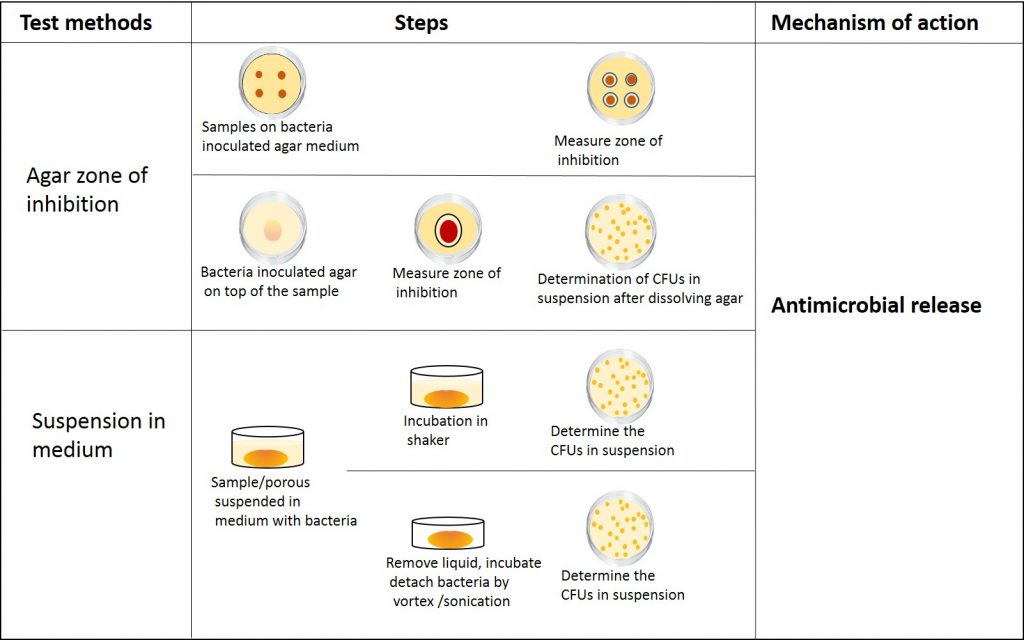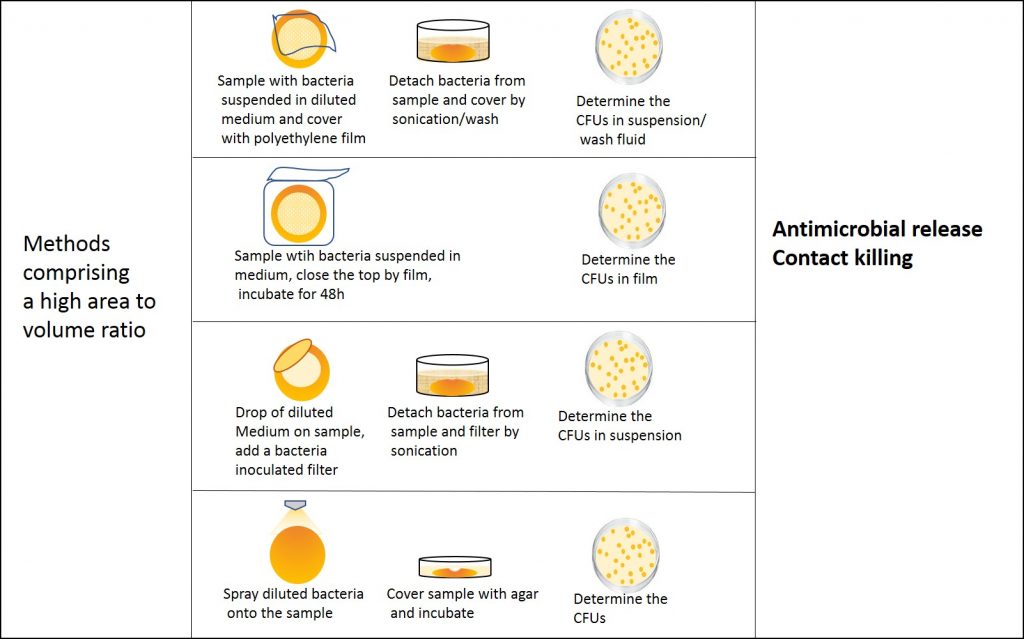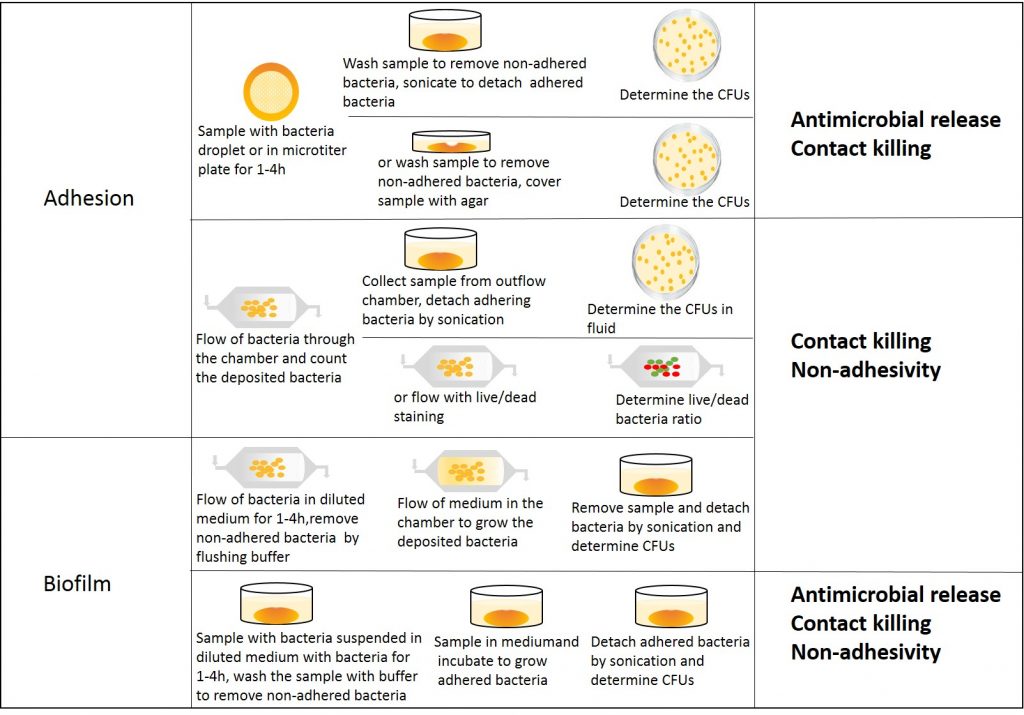




Different in vitro test methods is required since antimicrobial surface design is based on different mechanism of action. Since available industrial standard methods do not address the mechanism of antimicrobial surfaces, available methods for the evaluation of antimicrobial surfaces have been modified over the years. Since no single test method exists to differentiate the antimicrobial designs and prevailing mechanism of action, a clear guidance is required to choose an appropriate method.
Test methods that have been identified suitable to evaluate the activity of antimicrobial surfaces based on the release of antimicrobials, contact-killing or non-adhesivity are schematically illustrated below:



There are fourteen different industrial standard methods for evaluating antimicrobial surface design for an intended application, see list below. The antimicrobial activity is assessed based on three different mechanisms including release of antimicrobials, contact-killing and non-adhesivity.
(AATCC: American Association of textile chemists and colorists, ASTM: American society for testing and materials, EN: European standard, ISO: International standard organization, JIS: Japanese industrial standard, SN: Schweizerische Normen Vereinignung)
Molling, J.W. et al. Comparative performance of a panel of commercially available antimicrobial nanocoatings in Europe. Nanotechnol. Sci. Appl. 2014, 7:97-104. https://doi.org/10.2147/NSA.S70782
Sjollema, J. et al. In vitro methods for the evaluation of antimicrobial surface designs. Acta Biomater. 2018, 70:12-24. https://doi.org/10.1016/j.actbio.2018.02.001